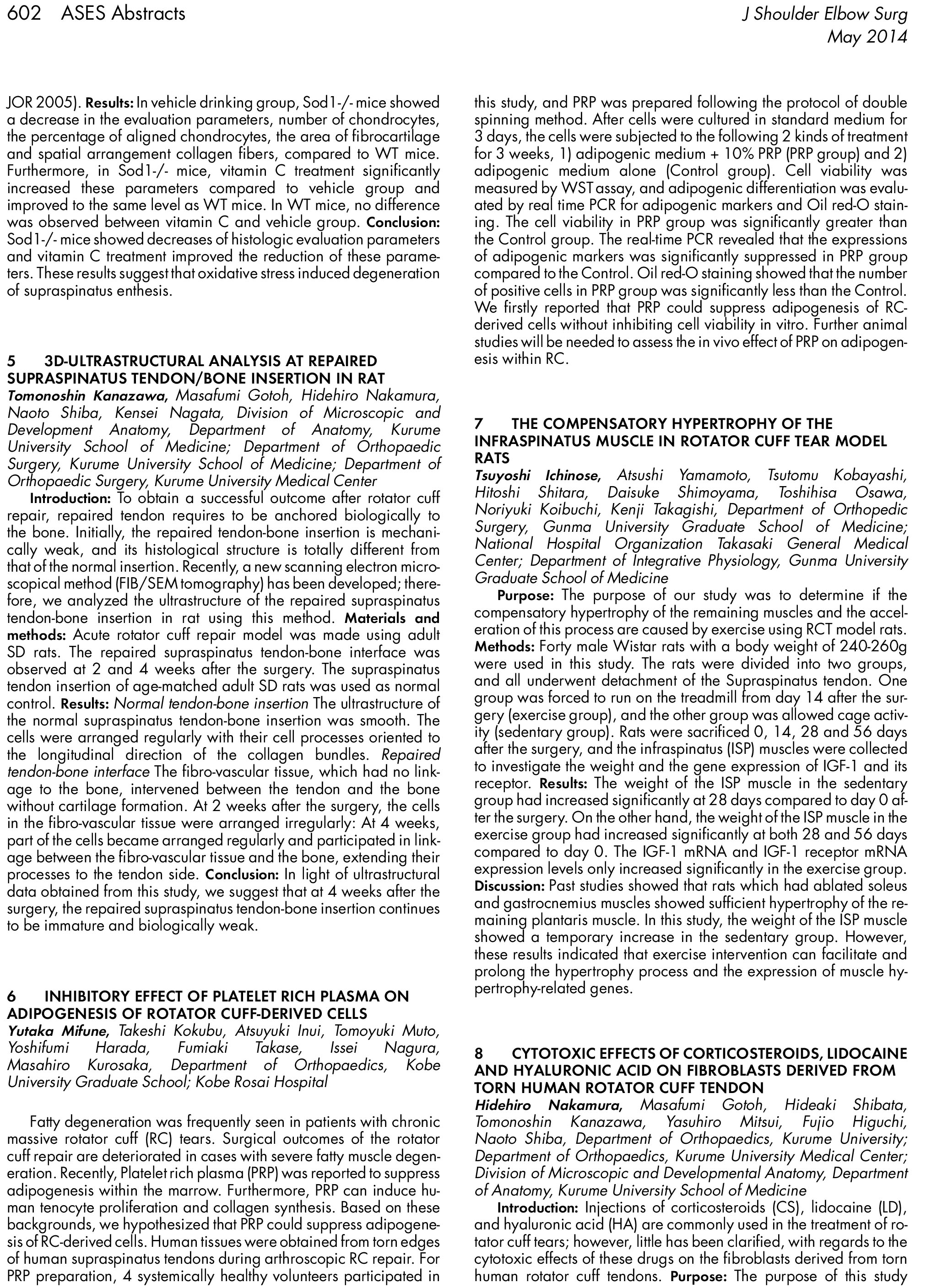
Cytotoxic effects of corticosteroids, lidocaine and hyaluronic acid on fibroblasts derived from torn human rotator cuff tendon
Cytotoxic effects of corticosteroids, lidocaine and hyaluronic acid on fibroblasts derived from torn human rotator cuff tendon
Article specifications
This clinical trial was published in 2014 in Journal of J Shoulder Elbow Surg (IF 2015: 0.99) by Japanese specialists. The purpose of this study was to determine the cytotoxic effects of CS, LD, and HA on human tendon fibroblasts derived from rotator cuff tears in vitro. Seven patients with rotator cuff tears were the subjects of this study. The tendinous tissue was harvested during surgery, and cultivated in DMEM. The cultured fibroblasts were exposed for 24h to the presence of CS, LD an HA. The cytotoxicity to the cells was evaluated using MTT assay, fluorescence-activated cell sorting (FACS), and Live/Dead cell counts with a fluorescence microscope.
Result
The results of this study showed that the cytotoxicity is strongest in CS-treated fibroblasts derived from torn rotator cuff tendon, compared with the cells treated by LD or HA. Therefore, CS should be used carefully when performing intra-bursal/articular injections in the treatment of rotator cuff tears.
